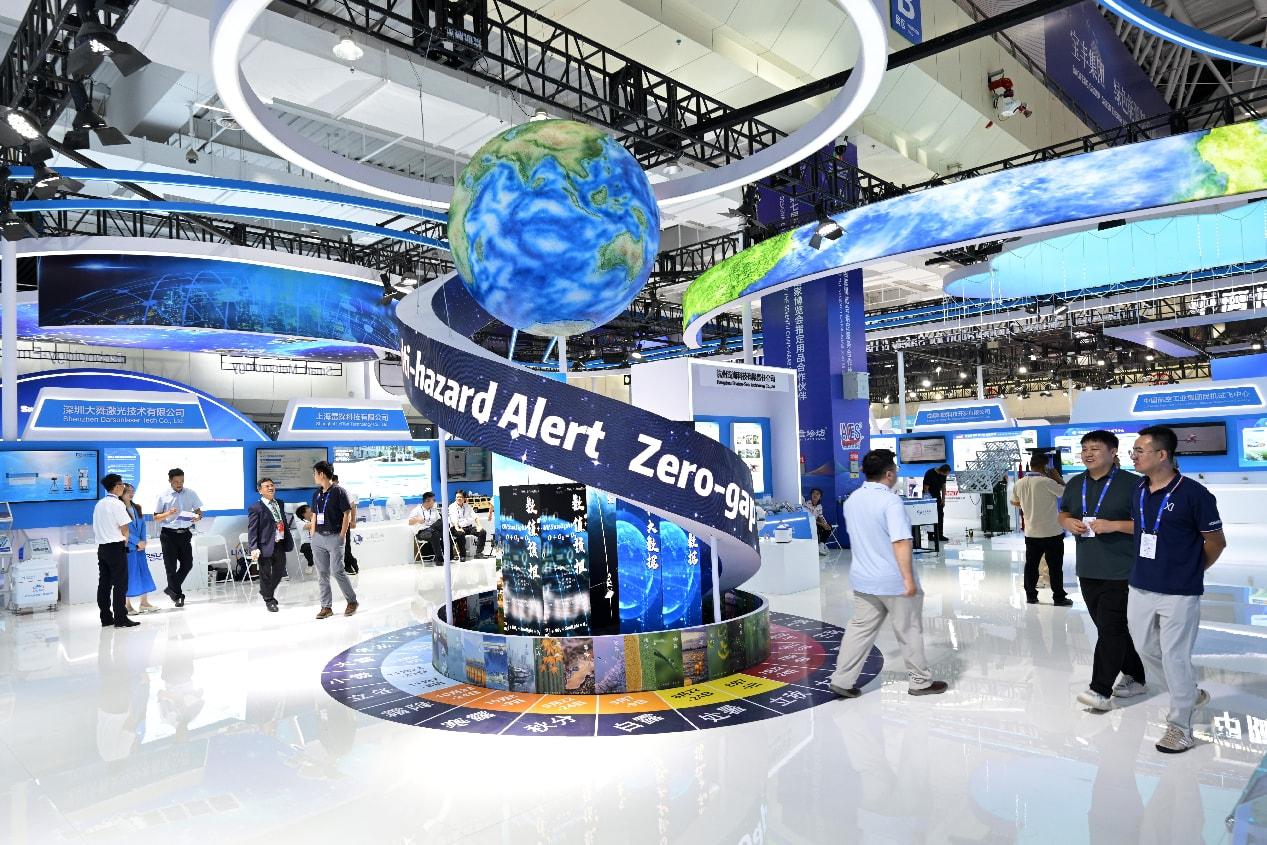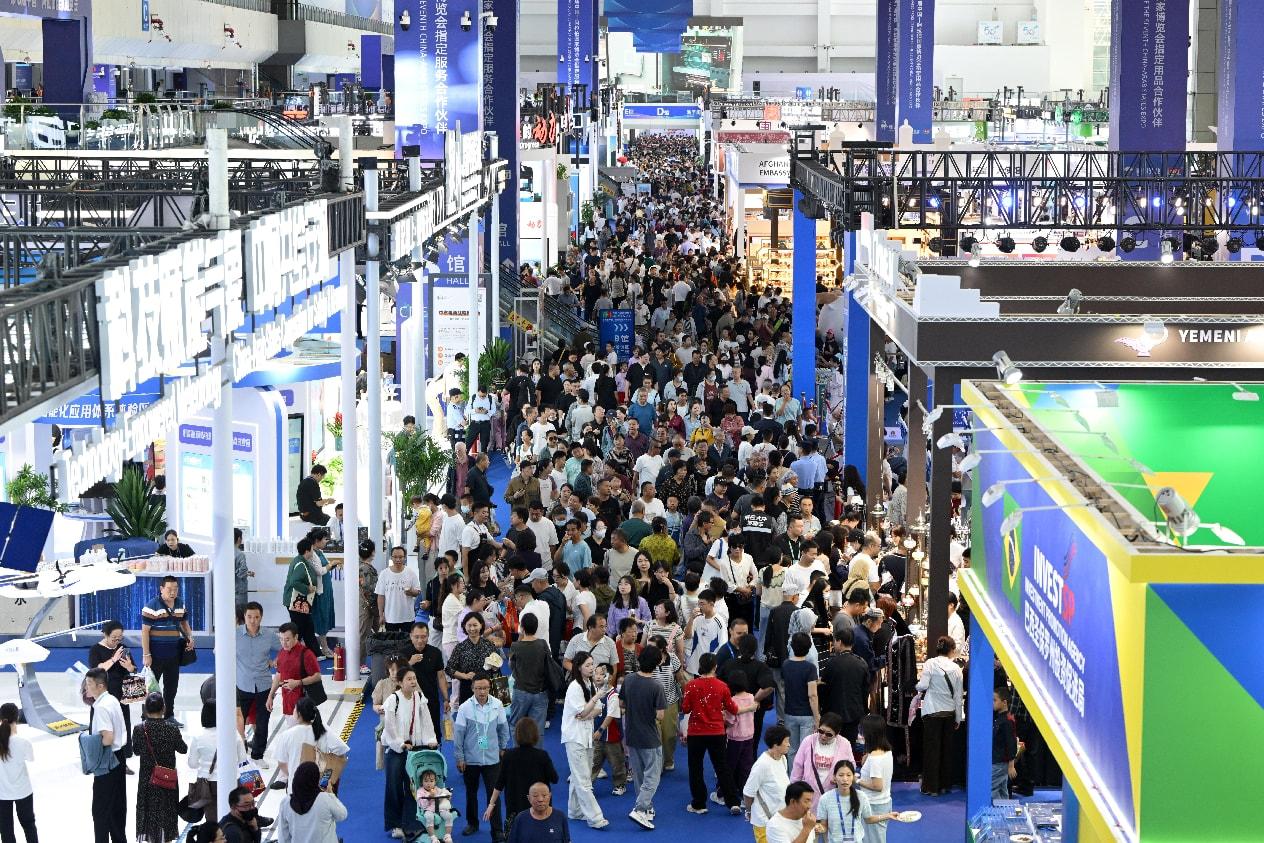




- BRNN
- BRI News
- BRNN News
- Database
Official Documents Polices and Regulations
Inter-government Documents International Cooperation BRI Countries
Business Guide Economic Data BRI Data
Trade
Investment Projects Latest projects
Cases - Content Pool

Photo taken on Aug. 28, 2025 shows the smart meteorology exhibition area of the seventh China-Arab States Expo. (Photo/Yuan Hongyan)
Operating around the clock to monitor global weather patterns and forecast temperature and precipitation changes, Fengyun meteorological satellites are widely regarded as integral to daily life.
These satellites represent an important milestone in China's meteorological modernization and exemplify the spirit of win-win cooperation between China and the Arab states under the Belt and Road Initiative (BRI).
At the recently concluded seventh China-Arab States Expo in Yinchuan, northwest China's Ningxia Hui autonomous region, smart meteorology displays highlighted how Fengyun satellites serve international users and strengthen disaster prevention and mitigation capacities. An AI weather presenter, proficient in both Chinese and Arabic, engaged with visitors at a meteorological technology exchange salon, showcasing advances in cross-border scientific collaboration.
Beyond exhibitions, China-Arab cooperation in meteorology continues to deepen, encompassing customized services, knowledge sharing, and talent development. These efforts reflect a longstanding dialogue in science, technology and culture that extends well beyond individual events.
Since Chinese President Xi Jinping proposed the eight major cooperation initiatives for China-Arab cooperation in 2022, concrete progress has been made across various sectors, including meteorology. The steady expansion of trade in services highlights China's commitment to high-level opening up and underscores the tangible results of Belt and Road cooperation, contributing positively to the global economy.

Photo taken on Aug. 29, 2025 shows crowds at the seventh China-Arab States Expo. (Photo/Yuan Hongyan)
Despite the geographical distance, China and Arab countries face shared challenges such as water scarcity and climate change, and shoulder common responsibilities in global climate governance and food security. Their complementary strengths in resources, industries, and technologies have enabled deeper alignment between the BRI and the development strategies of Arab countries, fostering broader, more resilient cooperation.
China brings not only goodwill but also strong capabilities to global collaboration. At the seventh China-Arab States Expo, QR codes embedded with data on green agriculture and hydrogen energy linked participants directly to experts and technologies, streamlining access to new partnership opportunities.
The expo served as a platform for forging such connections. From delivering Chinese-grown cucumbers and eggplants to supermarkets in the United Arab Emirates within just 36 hours to contributing to major infrastructure like Saudi Arabia's King Abdulaziz Port, China leverages its industrial base, technological prowess, and vast market to promote high-level cooperation.
Through integrated industrial chains, coordinated R&D, and demand-driven solutions, China and Arab countries are building new "chains of shared opportunity."
Shared benefits and inclusiveness remain central to this cooperation. Spearheaded by Ningxia, the China-Arab States Technology Transfer Center has launched demonstration projects in Mauritania, Morocco, and other countries, providing comprehensive, system-level solutions. Research teams from Ningxia University have developed advanced irrigation technologies now deployed in Oman and Egypt.
Science and technology cooperation has become a strategic priority for Arab countries pursuing economic diversification. Chinese innovation is increasingly embedded in local development, offering scalable, transferable solutions that enhance local capacity and independent development. This approach reflects China's philosophy of "teaching people how to fish," propelling China-Arab cooperation from "project addition" to "capacity multiplication."
China has remained the largest trading partner of the Arab states. Today, collaboration has expanded from trade and project contracting to regulatory alignment, knowledge transfer, and institutional innovation. This reaffirms that the potential of openness is boundless, that win-win cooperation is the path forward, and that collective progress is essential for global advancement.

Tel:86-10-65363107, 86-10-65368220, 86-10-65363106